North Dakota’s Missouri Valley Millennium Legacy Trail
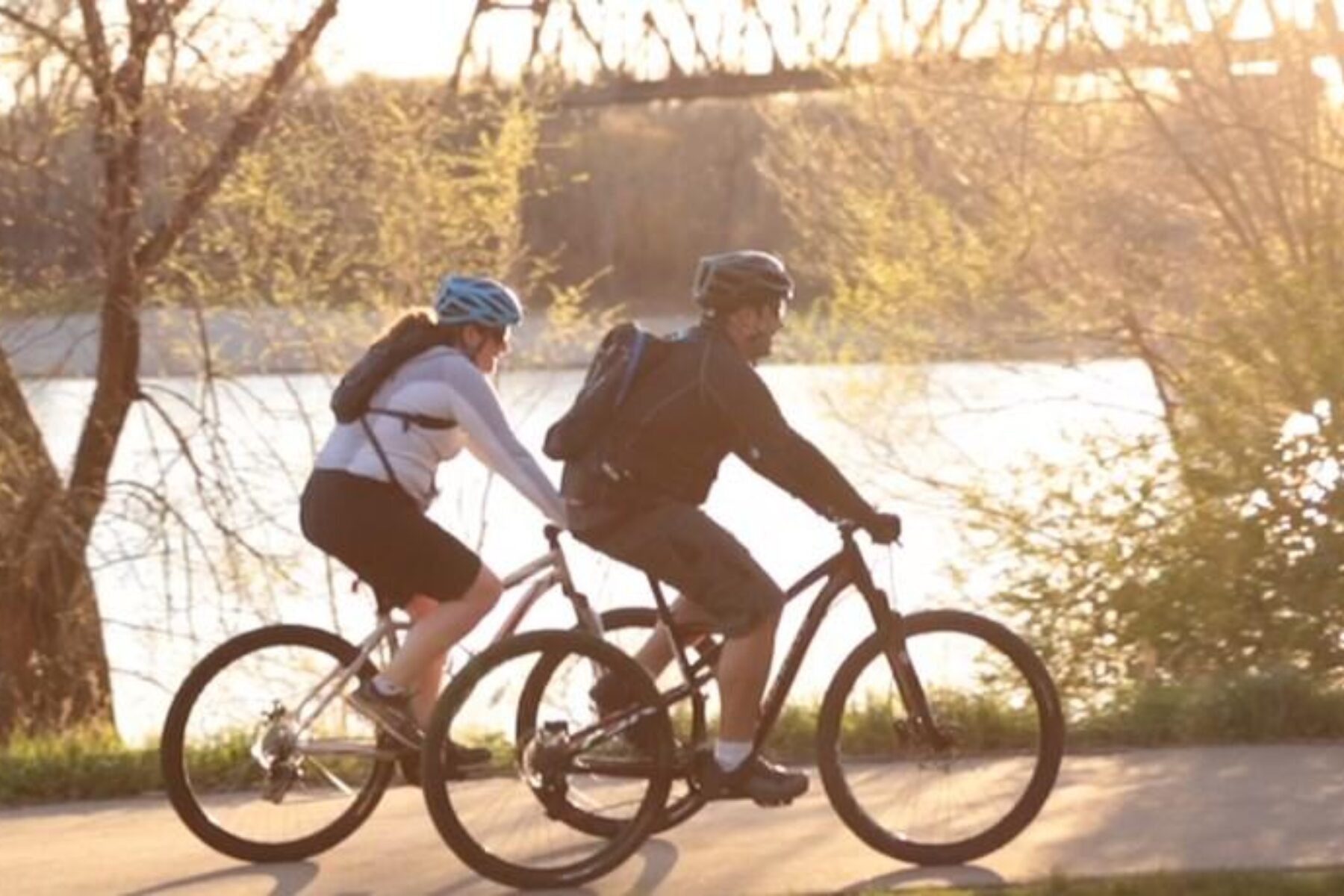
Trail of the Month: January 2024
“The trail just encompasses everything and offers that opportunity to maintain good wellness for the citizens around the community.”
—Lynn Beiswanger, a longtime Bismarck resident
When the snow begins to pile up and temperatures plummet in the central North Dakota cities of Bismarck and Mandan, avid runner Josh Askvig knows he can head to the Missouri Valley Millennium Legacy Trail for a scenic, safe and invigorating winter workout.
“If it snows, and you’re wondering how you can run outside, that’s the first place that’s generally cleared,” said Askvig, a Bismarck resident who exercises daily and incorporates running into his routine about four days a week—often on the trail.
That is just one example of the year-round appeal and all-purpose nature of the trail—known by most in the community as simply the Riverfront Trail—that runs through North Dakota’s capital city of Bismarck, stretching from the neighboring river town of Mandan in the north and west, and following the route of the Missouri River south for 4.6 miles along splendid river, bluff and prairie terrain.
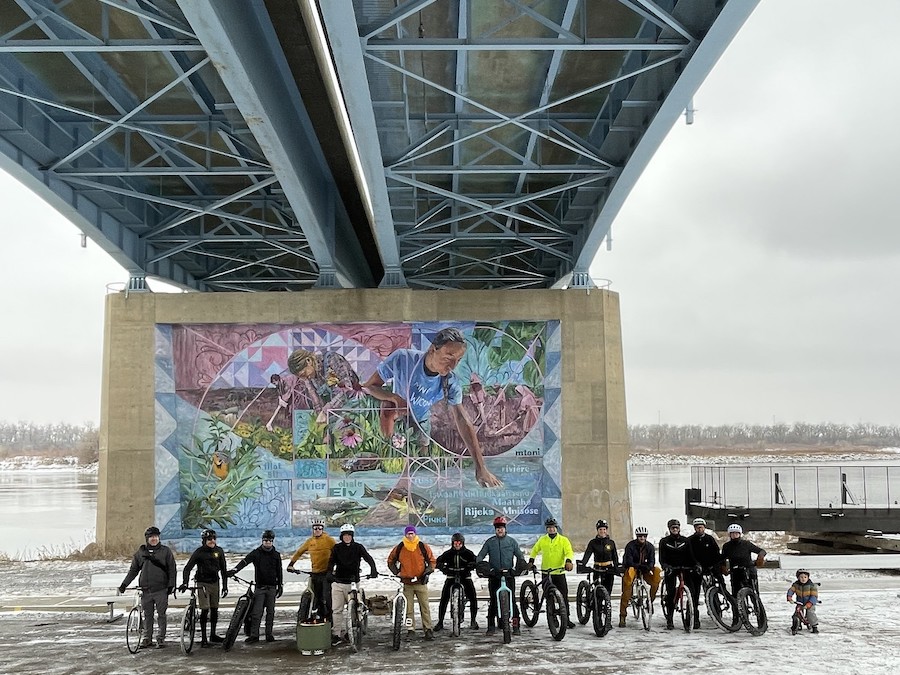
“I spend a lot of time outside, either by myself or with my family, and the Riverfront Trail is one of our favorites,” Askvig said. “You get great scenic views of the river; you get a chance to get through Bismarck without having to watch for traffic and you get to run into a lot of folks along the way. It’s a well-used, well-maintained trail.”
Lynn Beiswanger, a longtime Bismarck resident who lives about three blocks from the trail, sees firsthand the value of the Riverfront Trail’s connectivity. “Part of the popularity is it’s a connecting point to all of the rest of the trails that go throughout Bismarck-Mandan, so you can hook up by going across a couple of bridges and you can keep going for a long way.”
A Trail for All Seasons
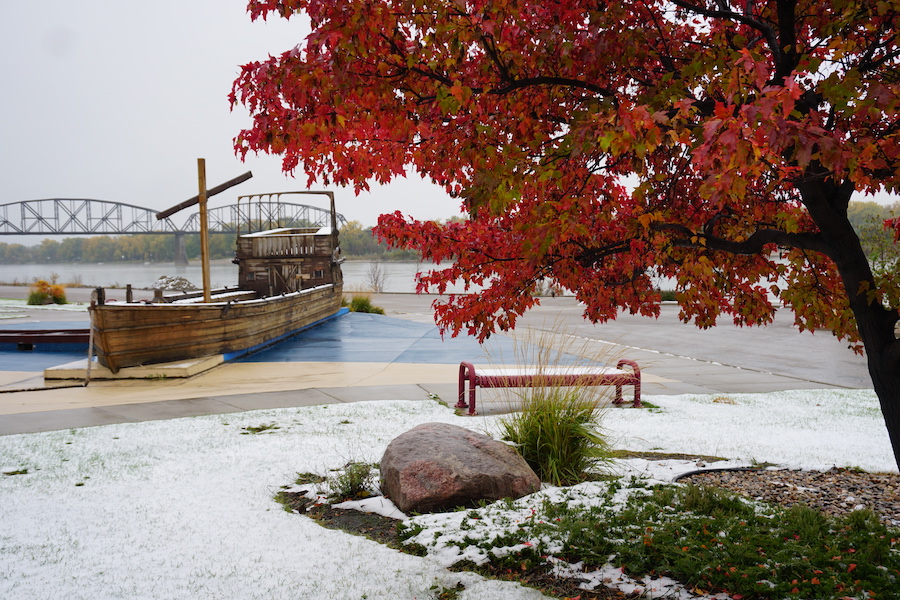
It comes as no surprise to Bismarck Parks and Recreation District Executive Director Kevin Klipfel that locals see the Riverfront Trail as a safe haven during the winter. Keeping the trail accessible year-round is one of the priorities of the agency, he said, noting that his department takes pride in keeping about 95% of the city’s trails open. “Our staff gets after those trails because people like to use them all year long.”
Of course, winter isn’t the only time that the trail is a great place to be. Come spring, the scene transitions from icy white to budding greens, then to a sea of emerald in the summer and finally to the golds, oranges and browns of fall.
“It’s beautiful anytime,” said Beiswanger, who especially loves the summer and fall views from “the top”—the hilly section to the north. “If you start at the top, you’re looking at the whole river.”
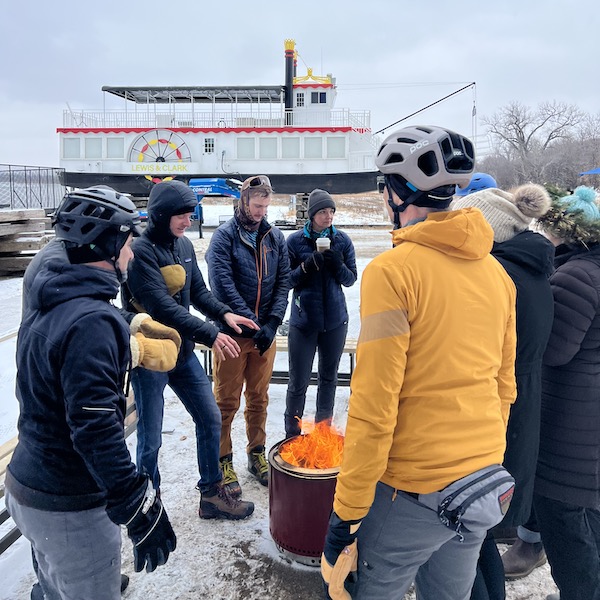
Although the Bismarck Parks and Recreation District does not have official usage numbers, Klipfel notes that the Missouri Valley Millennium Legacy Trail “is our busiest trail in town” with the trail providing access to numerous attractions and activities such as the Lewis and Clark Riverboat that cruises the waters of the Missouri, the Dakota Zoo, the Clem Kelley Athletic Complex and a boat ramp at Keelboat Park for river recreation.
Legacy of the Upper Missouri Valley
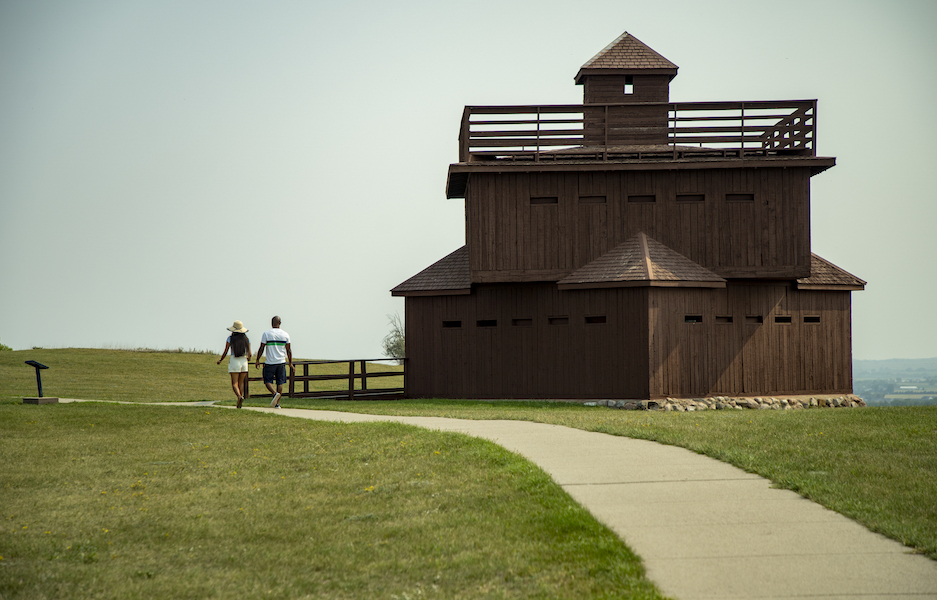
The “Millennium Legacy” part of its name stems from the early 2000s, when the trail—developed as a collaborative project between the Bismarck Parks and Recreation District, the cities of Bismarck and Mandan, and other local entities—was one of 52 trails created around the U.S. to commemorate defining moments in the history and culture of the nation. The Upper Missouri Valley region qualified because of its compelling story that included a flourishing Great Plains Indigenous people, a pivotal point in the Lewis and Clark Expedition, and early steamboat business on the Missouri River.
Centuries before, the region was the home of the Mandan, an Indigenous people believed to have been 10,000 to 15,000 strong before the arrival of European explorers and settlers in the 1700s and 1800s. The Mandan lived along both sides of the Missouri River and along its tributaries, the Heart and Knife Rivers. Today, traces of their history and culture are commemorated along the trail, from the interpretive path at Chief Looking’s Village Park to the series of eagle sculptures created by the United Tribes Technical College in three of the parks lining the river: Pioneer, Keelboat and Sertoma.
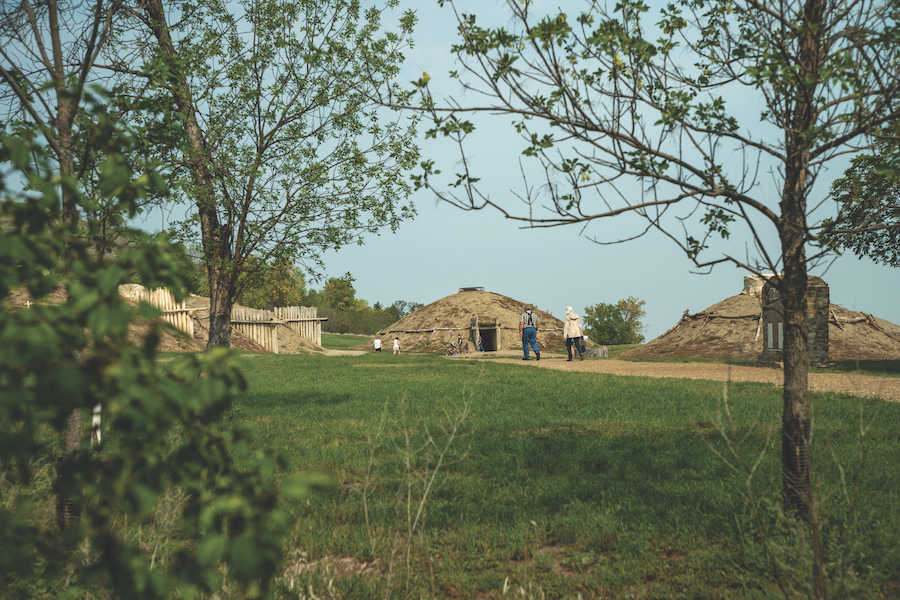
The Mandan people’s history is also central to Fort Abraham Lincoln State Park, located in south Mandan on the west side of the Missouri. Visitors to the state park will find six reconstructed earth lodges at the On-a-Slant Village, depicting the lifestyle and culture of the Mandan people during their time there from 1575 to 1781.
About 60 miles northwest of the Bismarck-Mandan trail system is the spot at the confluence of the Missouri and Knife rivers where the Lewis and Clark Expedition set up camp to survive the winter of 1804 to 1805 and famously met up with Sacagawea, the Shoshone woman who joined the expedition and helped to translate along the expedition’s journey to the West Coast.
Sharing this rich history was one of the inspirations for the new Missouri River Heritage Mural, unveiled this past August under the I-94 bridge along the trail. And, like the trail, it was developed with a collaborative spirit with several local artists and more than 200 community members taking part in the painting’s creation.
Growing Demand for Trails
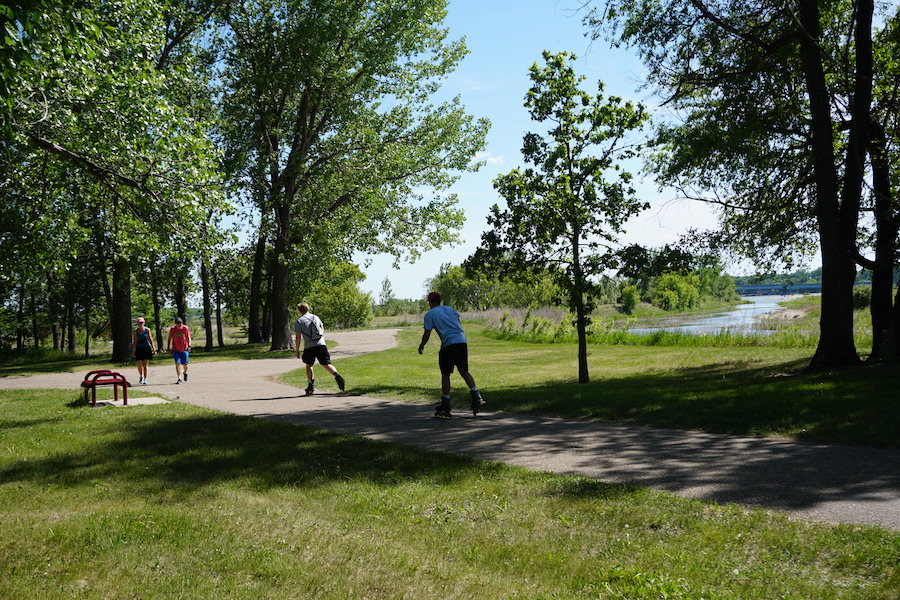
After more than two decades, the trail continues to grow. A recent federal Transportation Alternatives grant is helping to fund a $900,000 extension that will add nearly a mile of trail in the north, offering new connections to the city’s Elk Ridge Park and Elk Ridge Elementary. The extension is expected to be constructed this summer.
Additionally, the Bismarck Riverfront Festival Grounds project in the works near Keelboat Park was awarded $4 million this past November and is expected to draw additional visitors to the river and trail once complete.
“What I hear more and more around the community is the need to enhance the river opportunity,” Klipfel explained. “The Missouri River is a great asset to have in our community.”
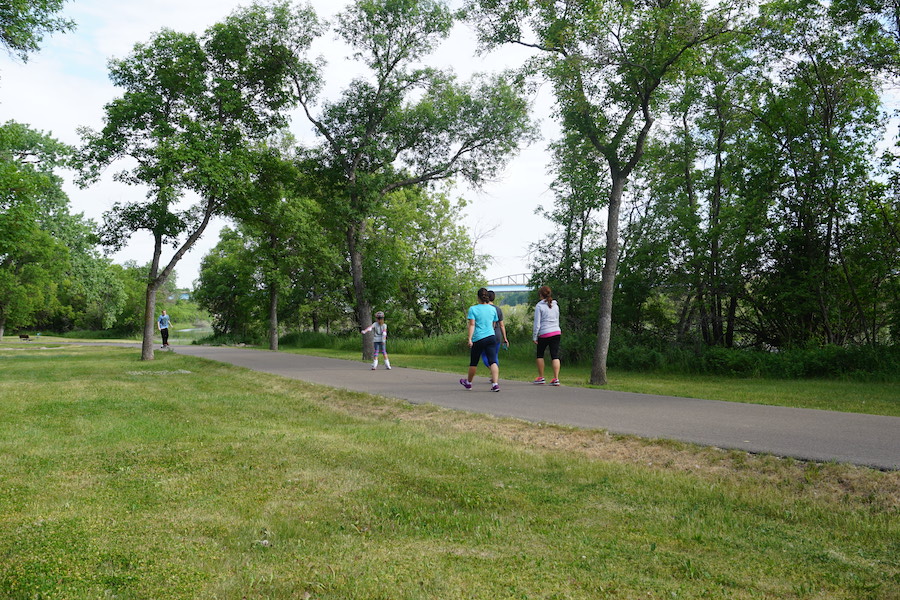
State Trails Coordinator Sarah Torgerson also sees Bismarck’s Riverfront Trail as a key piece in the state’s “last mile” policy of connecting existing “gateway community” trails to larger state trails. “This trail does tie into that,” Torgerson said, noting that by using a system of municipal trails and short sections of sidewalk, “You can walk or bike all the way from Bismarck, across the river into Mandan, and all the way down to Fort Abraham Lincoln State Park.”
Her position with the North Dakota Parks and Recreation Department is a relatively new one and she notes that, “There has been a big push for more outdoor recreation opportunities throughout the state.”
From the officials who work to maintain and enhance it to the people who regularly walk, run and bike it, the Riverfront Trail is seen as the gem of Bismarck’s network of 85 miles of trails.
“Based on overall balance and accessibility of trails, I think Bismarck and Mandan together have some of the finest trails that you could offer,” enthused Beiswanger. “The trail just encompasses everything and offers that opportunity to maintain good wellness for the citizens around the community.”

Related Links
- Bismarck Parks & Recreation District
- Mandan Parks & Recreation
- North Dakota Parks and Recreation Department
- North Dakota Tourism and Marketing Division
Trail Facts
Name: Missouri Valley Millennium Legacy Trail (also known as the Bismarck-Mandan Riverfront Trail)
Trail website: Bismarck Parks & Recreation District
Length: 4.6 miles
County: Burleigh, Morton
Start point/end point: In Bismarck, on the east side of the Missouri River, the trail runs from Chief Looking’s Village to Riverwood Drive in Sertoma Park; connections to Mandan can be made by crossing the river using the protected bike/pedestrian lane on the Memorial Highway bridge or the Bismarck Expressway bridge.
Surface type: The trail is primarily asphalt-paved with some concrete sections.
Grade: The grade is a combination of rolling hills on its northern end and relatively flat sections along the riverfront.
Uses: Walking, bicycling, inline skating; wheelchair accessible
Difficulty: This trail is rated as easy to moderate.
Getting there: The closest airport is the Bismarck Airport (2301 University Drive, Bismarck), which is less than a 10-minute drive from the trail’s southern end at Sertoma Park, or about a 15-minute drive to the trail’s northern end in Chief Looking’s Park. The Bismarck Airport is served by major airlines, including Delta, United, American and Allegiant.
Access and parking: In Bismarck, parking is available (from north to south) at:
- Pioneer Park at 1500 River Road (River Road and Burnt Boat Drive)
- Keelboat Park at 1605 River Road (adjacent to the I-94 underpass)
- Sertoma Park at 602 Riverside Park Road (parking entrance between Jefferson Avenue and Lincoln Avenue)
In Mandan, parking is available in Richard M. Longfellow Veterans Memorial Park (2001 Pirates Loop SE) near the western end of the Memorial Highway bridge.
To navigate the area with an interactive GIS map, and to see more photos, user reviews and ratings, plus loads of other trip-planning information, visit TrailLink.com, RTC’s free trail-finder website.
Rentals: When weather permits, the Bismarck Parks and Recreation District offers a bike-share program, BisParks BCycle; you can find stations along the trail in Pioneer Park and Sertoma Park. Another option is 701 Cycle & Sport (411 Fraine Barracks Road, Bismarck; phone: 701.221.9833); located just north of Sertoma Park, the shop offers mountain bikes and fat-tire bikes for rent.

Donate
Everyone deserves access to safe ways to walk, bike, and be active outdoors.
